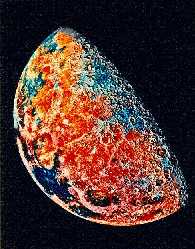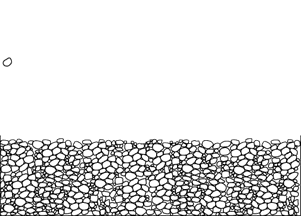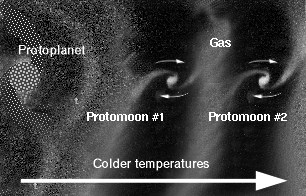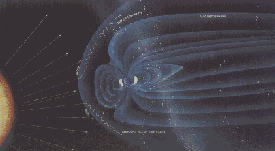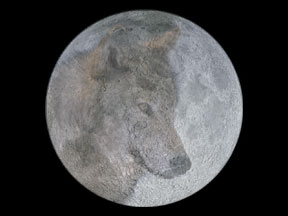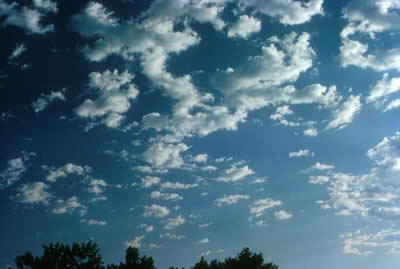Click on image for full size
NASA
About Lunar Water
In decades past is was accepted that the Moon contained no water. Moon rocks collected by Apollo astronauts (at lunar equatorial regions) contained no traces of water. Lunar mapping performed by the Galileo spacecraft at coarse resolution, shown here, found no traces of water. The recent Clementine mission, an Airforce mission, made measurements however, which suggested that small, frozen pockets of water ice may be embedded in shadowed regions of the lunar crust. Although the pockets are thought to be small, the overall amount of water may be quite significant, perhaps the size of Lake Erie.
This water may come from comets which hit the Moon from time to time. Water may also come from individual water molecules which migrate to the coldest regions of the Moon where they refreeze on the surface, trapped inside enormous craters -some 1,400 miles (2,240 km) across and nearly 8 miles (13 km) deep - at the lunar poles. Due to the very slight "tilt " of the Moon's axis, only 1.5 degrees, some of these deep craters never receive any light from the Sun - they are permanently shadowed. This means that the frozen water must remain there because otherwise energy from sunlight would split much of this water into its constituent elements hydrogen and oxygen, both of which would fly off into space immediately.
It is in such craters that instruments on board the Lunar Prospector spacecraft found frozen water. This water-ice could be mined and then split
into hydrogen and oxygen by solar panel-equipped
electric power stations or a nuclear generator. Such
components could make space operations as well as
human colonization on the Moon possible, since transporting
water (or hydrogen and oxygen) from Earth would be
prohibitively expensive.


